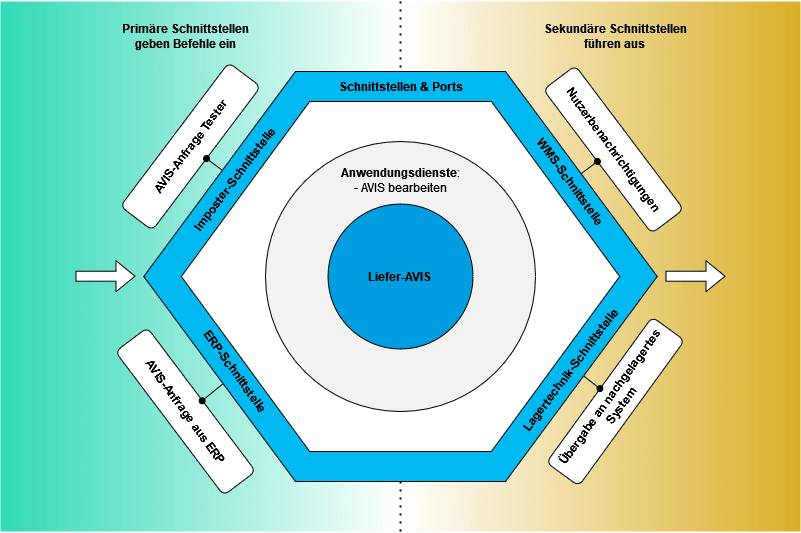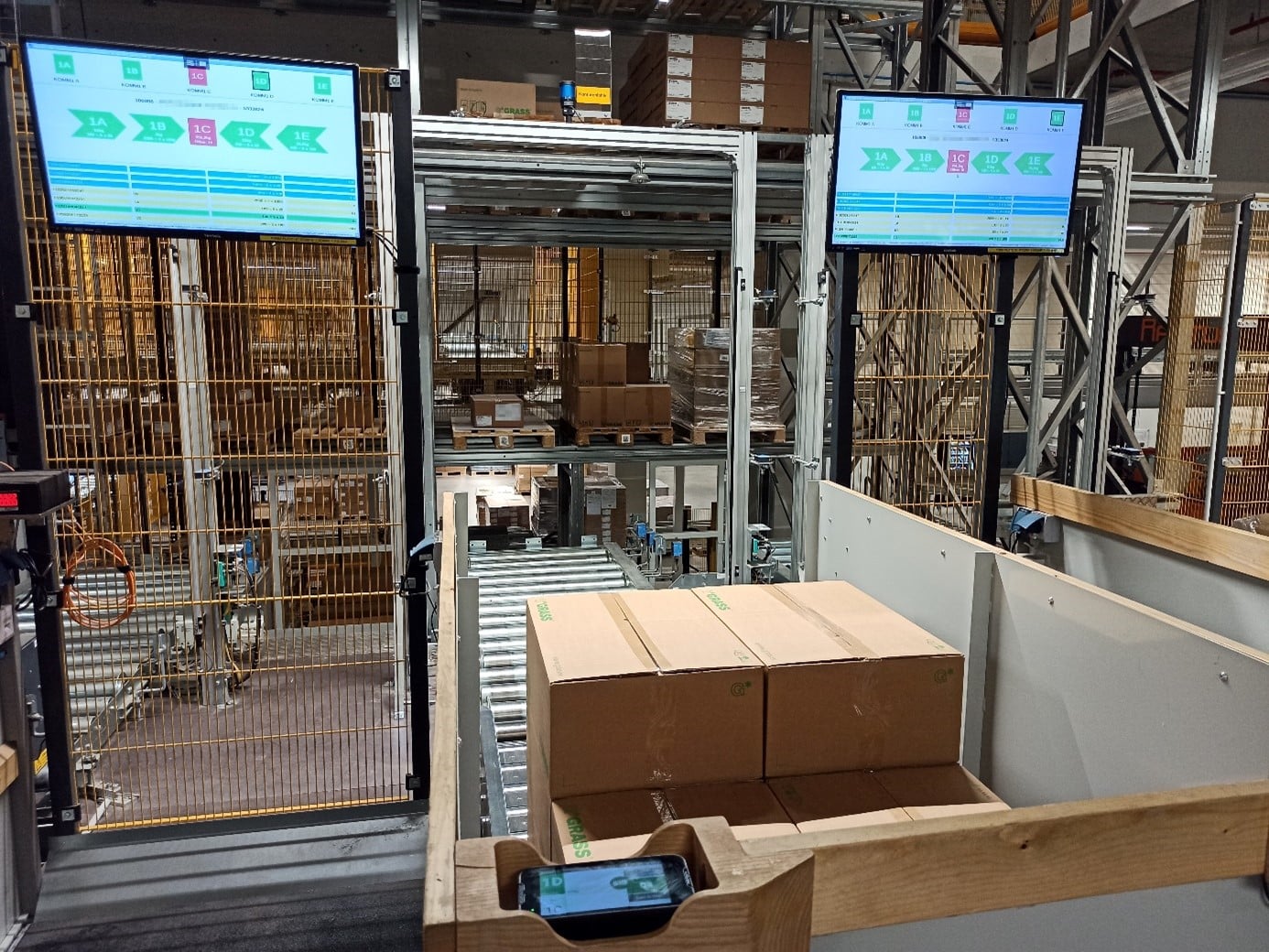Intralogistics systems often communicate with upstream and downstream instances, such as the ERP or CEP service providers. This often results in complex interface and cooperation requirements between the client and service providers in retrofits or greenfield projects. This often makes the feasibility of stress or functional tests enormously difficult, but a look at a survival strategy from nature can provide a remedy.

Mimicry of upstream and downstream systems via imposter systems
In biology, the term “mimicry” is used to describe the imitation of visual, auditory and olfactory signals. What is used in nature as a survival strategy becomes a powerful tool in the highly interconnected and complex world of logistics: Instead of the mapping of test scenarios by the actual live systems, such as ERP and material flow computers, on one side of the communication is a lean imposter system that, depending on the function, not only simulates the correct signals but can also record, process and display feedback.
Due to the often also contractually complex mixture of different solution providers, functional and performance tests are often associated with a high coordination effort. For example, a functional test may be considered a separate maintenance effort by one service provider, or the deployed solution may need to be modified to ensure that the test scenario does not trigger further processes that should only take place in live operation. Especially in e-commerce, where purchase orders are the key to successful integration and mass testing, it is advantageous if these can be generated quickly by an Imposter system. This also prevents downstream systems such as accounting from being ‘cluttered’ with irrelevant data from functional tests, even if this is marked as test data.
Structure of the system
In order to keep the flexibility and adaptability of the system as high as possible, the use of the software design principle of ‘hexagonal architecture’ is recommended. It separates the business from its technical requirements. In this way, the business modules can be tested independently of databases, web servers or other technical interfaces. The connected elements such as user interfaces can be changed or exchanged at any time while accessing the same building blocks.

What are the benefits for the business domain?
The most immediate benefit is a less complex, faster testing process: Coordination with the providers of upstream or downstream systems can thus be handled in one block right at the start of the project. Once it is clear how the systems interact and how data is transferred, testing or commissioning times can be significantly reduced. The Imposter system shrinks the number of necessary participants to the people responsible for the trade and the developers of the system. In addition to simply feeding data for integration and mass testing, existing historical data from the original system can also be used by the Imposter solution as a basis to perform meaningful testing with real data.
What are the advantages for logistics domain?
The Imposter system allows granular functional and performance tests to be carried out in all warehouse processes, such as notification, without getting in the way of corporate business processes. Even more complex requirements, such as complete stock removals and order waves, can thus be individually parameterized in order to prepare everything for the go-live in the best possible way. The aforementioned notifications of deliveries, for example, are injected into a warehouse management solution from the outside via the Imposter system and treated as if they were real ones: Neither the user nor the processing system can tell the difference.
Automation solutions with diverse sensor technology and machine learning approaches are making inroads in the field of packaging and palletizing. The challenge here is that the algorithm first has to learn, and to do this, different packaging materials or pallets have to be moved into the station. With an Imposter system, this is done during the regular operation of the rest of the warehouse infrastructure, as the intermediary system feeds the requirements into the material flow without accumulating superfluous information in the ERP. Efficiency tests for automatic small parts warehouses or self-propelled systems can also be parameterized quickly in this way.

This also applies to NIO processes and incoming goods processes; these can thus be checked for their reliability and efficiency before commissioning or after retrofits. For example, by bypassing the programmable logic controller at an I-point through the Imposter system at the push of a button to test the NIO processes without using the plant. The use of this solution is also advantageous for partial advances in plant construction: If the sensor technology has not yet been installed, it can be emulated in this way. The process can therefore be tested and as soon as the sensor technology is delivered, it seamlessly takes the place of the Imposter system.
What needs to be considered during implementation and development from a project management perspective?
The central aspect of an Imposter system is to map the intended use cases as comprehensively as possible. In the conception phase, this requires a high level of process knowledge on the part of all those involved and precise coordination of where and how the system is to be interposed. This ensures that the Imposter can be seamlessly replaced by live systems or quickly reused during tests. The final step is to make the system easy to use and expand: for example, while it makes sense that depalletization can be started quickly, it should not be possible to do so with one wrong click.
Summary
Imposter systems allow integration and mass testing to be performed faster and more efficiently. For retrofits or green-field projects, the solution allows missing elements to be ‘simulated’ so that testing can continue until it is ready for integration. Especially in complex automation and system landscapes with many dependencies, Imposter systems help to reduce the complexity of tests and to create individual test sequences for the individual trades. In this way, there is certainty that the core of the process works and live systems can be connected without any problems.
This article was first published under the title “Weniger simulieren, mehr nachahmen” (“Simulate less, imitate more”) in the special issue ‘Software in Logistics 2022’ of the german trade magazine Logistik HEUTE.

